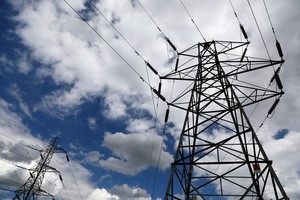ION expands ETF trading capabilities with Tradeweb integration
Investing.com -- Data centers’ soaring energy demands are set to fuel rapid growth in the global power equipment industry, with one expert forecasting the data center-related segment to double in size over the next five years.
Tommy Leong, former senior vice president of Schneider Electric (EPA:SCHN), told Bank of America in an expert call that artificial intelligence is a key driver. He estimates the overall power equipment market will also double within a decade.
“The expert is positive on demand from AI, and he estimates the data center-related power equipment market size to double in the next 5 years,” BofA said, adding that accelerating demand from AI is straining supply chains.
European multinational suppliers are facing lead times of 12 to 24 months, compared with 6 to 12 months for Chinese suppliers.
Transformer prices have climbed 50% in the past five years, driven by surging demand and fluctuating commodity prices. This dynamic is creating opportunities for Chinese manufacturers to expand market share, a trend Leong expects to continue over the next five to ten years.
The shift is also being shaped by higher standards in artificial intelligence data centers (AIDC). Tier-4 facilities, which dominate the high end of the market, allow only 10 minutes of downtime annually and require full redundancy.
That contrasts with tier-3 centers, which can afford up to 30 minutes of downtime and less redundancy.
Such requirements are boosting demand for dry-type transformers, gas-insulated switchgear, and other power quality equipment. While most demand still comes from North America, Leong sees rising interest in the Middle East and eventual expansion across Asia.
“Currently, data centers in Southeast Asia still mainly focus on cloud computing instead of AI,” BofA notes.
In that region, Leong described three market segments: optimum, medium, and minimum. European and U.S. firms dominate the high-end optimum segment, while Japanese and Korean suppliers are strong in the medium tier.
Chinese companies, once focused mainly on the lowest tier, are now making inroads in the medium segment thanks to tight supply and rising demand.
Leong points out that for the top tier, entry barriers remain high due to regulation, certification requirements, and customization needs.
Beyond Southeast Asia, Chinese firms are also winning share in the Middle East and Belt and Road regions, often supported by engineering procurement construction projects.
